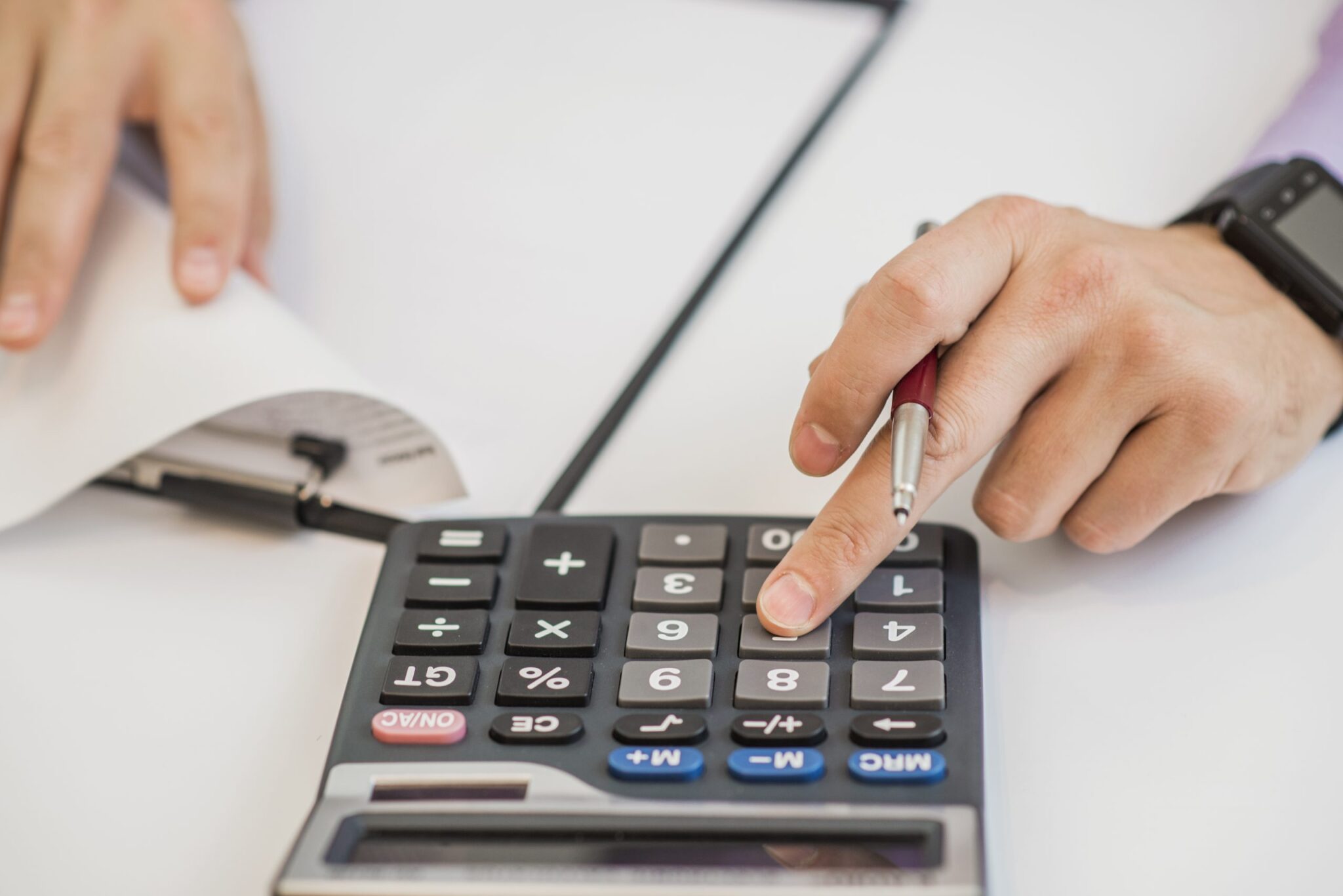If you’re looking to become a fantastic digital advertiser, you don’t have to be a numbers guru. However, you should know a few key advertising formulas (and have a trusty calculator by your side!).
Data drives approximately 90% of our decisions online, so it’s essential to understand these formulas and how to use them to improve your ad campaigns.
Split testing is a crucial part of successful digital advertising. By testing different ad elements against each other, you can use these formulas to determine which one performs better and optimize your campaigns accordingly.
In this article, I’m going to share 8 essential advertising formulas with you and show you how to use them to steer your campaigns towards success.
So, let’s dive in and take a look at these formulas together!
CPC Formula (Cost-per-click)
Are you familiar with the CPC formula? It’s a really important metric in the world of digital advertising. Let me break it down for you in a simple and friendly way.
CPC = Advertising Spend/Number of Clicks
The CPC formula is all about measuring the cost-per-click of your digital ads. It’s calculated by dividing your advertising spend by the number of clicks your ad generates. For example, if you spend £100 on ads and get 1000 clicks, your CPC would be 10p.
But what does this mean for your ad? Well, the lower your CPC, the better your ad is performing. It means that you’re targeting the right audience and your timing is on point. And let’s be honest, who doesn’t want their ad to perform well, right?
Now, it’s important to note that a high CPC doesn’t necessarily mean your ad is doing poorly. If you’re running a conversion campaign, your ads might have a high CPC but still have high conversion rates, which is a success in itself.
So, every ad you run should aim to create action in your target audience, and that action can be measured in clicks. Keep an eye on your CPC and strive for that lower number to get the most bang for your buck!

Conversion Rate Formula
Let’s talk about conversion rates and how they can help you drive successful digital ad campaigns.
Conversion rate is the percentage of people who take your offer after seeing it. The formula for conversion rate is:
(Number of conversions / Number of clicks) x 100
For example, if 200 people clicked on your ad and you generated 25 conversions, your conversion rate would be 12.5%.
Your conversion rates are a reflection of the quality of your landing page, the strength of your offer, and how well your audience aligns with your ad’s offer. It’s important to keep in mind that creating ads that generate clicks is not enough – you need to be able to convert those clicks into meaningful actions for your business.
To optimize your conversion rates, make sure that you’re targeting people at the appropriate point in their relationship with your brand. A great way to do this is by retargeting people who have already interacted with your brand, website, posts, or offers. This can help increase the likelihood of conversion.
Additionally, you can improve your conversion rates by making sure that your landing pages and ads are consistent, using social proof, and creating a sense of urgency with FOMO. By using these strategies, you’ll be able to increase the chances of your audience taking action.
Remember, a high conversion rate means that your landing page and offer are compelling, and your audience is engaged. So, keep these tips in mind and happy advertising!
CTR Formula (Click Through Rate)
Let’s continue our discussion on important advertising formulas and take a closer look at the Click-Through Rate (CTR).
CTR is a measure of the percentage of people who click on your CTA, link, or offer after seeing it. The formula for CTR is:
(Number of clicks / Number of impressions) x 100
For example, if 5000 people see your link and 1000 of them click on it, your CTR would be 20%.
Your CTR is a reflection of the power and appropriateness of your CTA. It’s important to note that while CTR isn’t always used in digital advertising, it is a crucial formula when it comes to understanding the strength of retargeting and broadcasts (such as clicks on cart abandon emails).
Think of CTR like this – it’s the number of people who see your offer and the percentage of those who decide to find out more about it. The higher your CTR, the more successful your ad’s CTA (or link placement) and target audience.
To increase your CTR, you can make sure that your CTA is clear, compelling, and relevant to your target audience. You can also experiment with different ad formats, such as video or carousel ads, and use eye-catching visuals to grab your audience’s attention.
Remember, a high CTR means that your ad is resonating with your audience and encouraging them to take action. Keep these tips in mind as you continue to optimize your digital ad campaigns!

CPM Formula (Cost Per Mille)
Let’s continue our discussion on advertising formulas and take a closer look at the Cost Per Mille (CPM). CPM is a measure of how much you’ve paid for a thousand people to see your ad. The formula for CPM is:
(Ad spend / Impressions) x 1000
For example, if you spend £21 on an ad that 3000 people see, your CPM would be £7.
As you may know, “mille” is a Latin word for a thousand, hence the name Cost Per Mille.
CPM is a great way to measure the cost of your ad exposure as the digital world allows advertisers to show ads to people for very little per impression. This formula is best used by brands who are hoping to increase their awareness and exposure online, as it does not track actions, conversions, or clicks.
It’s important to keep in mind that CPM can vary across platforms and your ad’s success. If you’re running ads on Facebook, for instance, you can learn how to prime your ads for the Facebook ad algorithm to ensure you’re getting the best value for your money.
So, if you’re looking to increase your brand’s exposure online, CPM is a great formula to keep in mind. Make sure you’re monitoring your ad spend and impressions to get the most out of your advertising budget.
CPL Formula (Cost Per Lead)
CPL is a measure of how much you’re spending on ads to generate one lead. The formula for CPL is:
Ad Spend / Leads Generated
For instance, if you spend £100 on ads and generate 20 leads, your CPL would be £5.
As an advertiser, you’ll want to lower your CPL as much as possible, but not at the expense of the quality of your leads. High-quality leads are members of your target market who are likely to buy from your business in the future.
The best way to reduce your CPL is to offer something in exchange for your audience’s contact details. This is known as a lead magnet. Lead magnets can come in many forms, such as a free e-book, a webinar, or a discount code.
If you’re not already using a lead magnet, you can download our free lead magnet checklist from the Einstein Marketer studio to get started.
Remember, a lower CPL means cheaper leads, but it’s important to maintain the quality of your leads to ensure the long-term success of your business. So, keep these tips in mind as you optimize your digital ad campaigns.

CPA Formula (Cost Per Acquisition)
CPA is a measure of how much an advertiser has spent to achieve each conversion (aka acquisition). The formula for CPA is:
Ad Spend / Total Acquisitions
For example, if you spend £50 on a digital advertising campaign that acquires 100 leads, your CPA would be 50p.
It’s important to note that a conversion doesn’t necessarily refer to product sales. CPA can also be used for leads, as seen in the example above.
CPA doesn’t take into account impressions or clicks and works solely on the productivity of your ad spend. This makes it a critical metric for anybody running conversion campaigns with the aim of generating leads or sales.
To optimize your CPA, make sure that you’re targeting the right audience with a compelling offer. You can also experiment with different ad formats and optimize your landing pages to increase your chances of conversion.
Remember, a low CPA means that you’re getting more conversions for less money. So, keep these tips in mind as you optimize your digital ad campaigns for success.
ROI Formula (Return on Investment)
ROI is a measure of how much an advertiser is returning for every £ (or $) spent on ads.
The formula for ROI is: (Total Revenue – Total Cost) / Total Cost
or
ROI as a percentage (%) = (Total Revenue – Total Cost) / Total Cost (x100).
For example, if you spend £200 on ads that generate £600 in product sales, your ROI would be £2 for every £1 spent, or 200% if you prefer to see ROI as a percentage.
ROI is a crucial metric for advertisers who are running conversion campaigns. Ad campaigns that aim to acquire leads or customers, but don’t return an advertiser’s spend (by at least breaking even), will lose money.
It’s important to note that ROI is a formula that can be used and transferred into any element of business where money is spent, making it crucial in all aspects of marketing, not just advertising.
To increase your ROI, focus on optimizing your ad campaigns for conversions, using high-converting landing pages, and targeting the right audience with the right offer.
Remember, a high ROI means that you’re getting a good return for every penny spent on advertising. So, keep these tips in mind as you optimize your digital ad campaigns for success.

ROAS Formula (Return On Advertising Spend)
ROAS is a measure of how much an advertiser is returning (in terms of revenue) on their advertising spend. The formula for ROAS is:
(Total Revenue from Advertising / Total Ad Spend) x100
For example, if you spend £1000 on Facebook ads and make £3000 in sales, your ROAS would be 300%.
ROAS is another crucial metric when measuring the quality of a conversion campaign. Although ROI is similar, ROAS is much more tactically specific to advertising, and it can be made even more specific for each advertising channel.
To increase your ROAS, focus on optimizing your ad campaigns for conversions, using high-converting landing pages, and targeting the right audience with the right offer. It’s also important to regularly analyze and adjust your advertising strategy based on your ROAS.
Remember, a high ROAS means that you’re getting a good return on your advertising spend, and ultimately, making more money for your business. So, keep these tips in mind as you optimize your digital ad campaigns for success.
Conclusion
Great job on learning about these important advertising formulas! When used correctly, the 8 formulas we covered in this guide can help direct and dictate the success of your campaigns.
It’s important to remember that you should be running split tests and allowing your ads enough time (usually a week) to gather a reliable amount of data before using these formulas. The answers you get will tell you which campaigns to back and which to kill, making these formulas crucial to your success.
Just remember to match the correct metric with the correct ad objective. By doing so, you’ll be able to make informed decisions about your advertising campaigns and ultimately, achieve better results.




